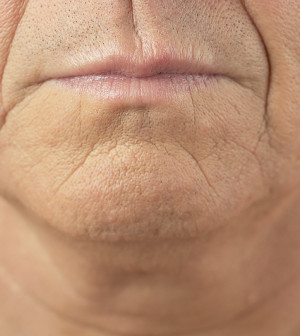- Double Mastectomy May Offer No Survival Benefit to Women With Breast Cancer
- Toxic Lead Found in Cinnamon Product, FDA Says
- Certain Abbott Blood Sugar Monitors May Give Incorrect Readings
- Athletes Can Expect High Ozone, Pollen Counts for Paris Olympics
- Fake Oxycontin Pills Widespread and Potentially Deadly: Report
- Shingles Vaccine Could Lower Dementia Risk
- Your Odds for Accidental Gun Death Rise Greatly in Certain States
- Kids From Poorer Families Less Likely to Survive Cancer
- Tough Workouts Won’t Trigger Cardiac Arrest in Folks With Long QT Syndrome
- At-Home Colon Cancer Test Can Save Lives
Nursing Home Care May Be Out of Reach for Many Aging ‘Boomers’: Study


With higher rates of illness but fewer adult children to care for them, many of America’s baby boom generation may find themselves unable to pay for the nursing home care they need, a new study warns.
Already, a growing number of older Americans are developing chronic diseases but can’t cover the costs of long-term care in a nursing facility, the U.S. National Institute on Aging-funded report says.
The statistics represent “an approaching crisis in caregiving,” Richard Suzman, director of the NIA’s Division of Behavioral and Social Research, said in an agency news release.
“Baby boomers had far fewer children than their parents. Combined with higher divorce rates and disrupted family structures, this will result in fewer family members to provide long-term care in the future,” Suzman explained. “This will become more serious as people live longer with conditions such as cancer, heart disease and Alzheimer’s.”
The analysis of national data revealed that chronic diseases such as high blood pressure, heart disease, lung disease and diabetes rose among older Americans between 1998 and 2008.
By 2008, 41 percent of older adults had three or more chronic conditions, 51 percent had one or two, and only 8 percent had none, according to the NIA-funded Census Bureau study.
While rates of smoking and excessive drinking have fallen among Americans aged 65 and older, the percentage of overweight and obese seniors has risen, the report notes. Between 2003 and 2006, 72 percent of older men and 67 percent of older women were overweight or obese.
Obesity boosts the risk of diabetes, arthritis, mobility problems and even death, according to the report.
The NIA investigation also looked at the costs of nursing home care and older Americans’ ability to pay for it. In 2010, the average cost of a private room in a nursing home was $229 a day — or almost $84,000 per year.
However, the NIA team calculated that less than one-fifth of seniors can afford to live in a nursing home for more than three years, and nearly two-thirds can’t afford even one year.
Medicare covers short-term nursing home care for older and disabled patients after they’ve been hospitalized, and Medicaid covers long-term nursing home care for low-income seniors who qualify. In 2006, Medicaid paid for 43 percent of long-term nursing home care.
This all means that “most of the long-term care provided to older people today comes from unpaid family members and friends,” Suzman said.
There are currently more than 40 million Americans who are 65 and older, and that number is expected to grow to 83.7 million (one-fifth of the U.S. population) by 2050, according to the study.
“We hope this report will serve as a useful resource to policymakers, researchers, educators, students and the public at large,” Enrique Lamas, the Census Bureau’s associate director for demographic programs, said in the news release.
More information
There’s more on healthy aging at the U.S. Centers for Disease Control and Prevention.
Source: HealthDay
Copyright © 2024 HealthDay. All rights reserved.










